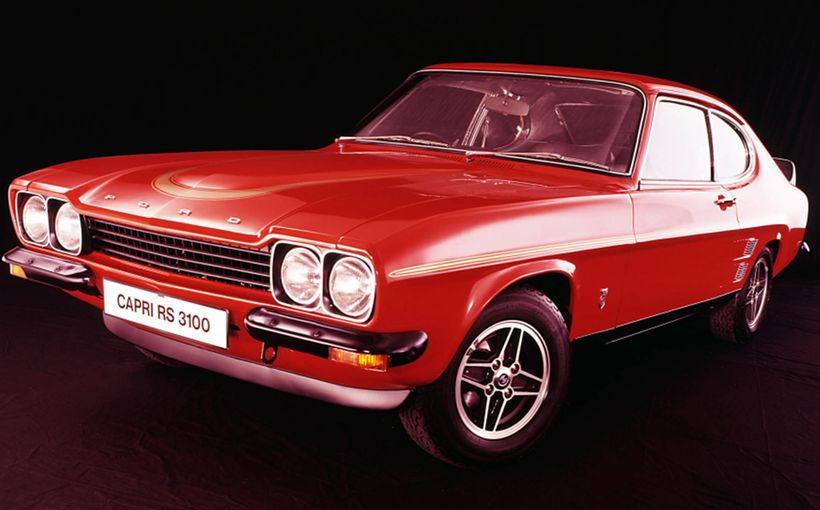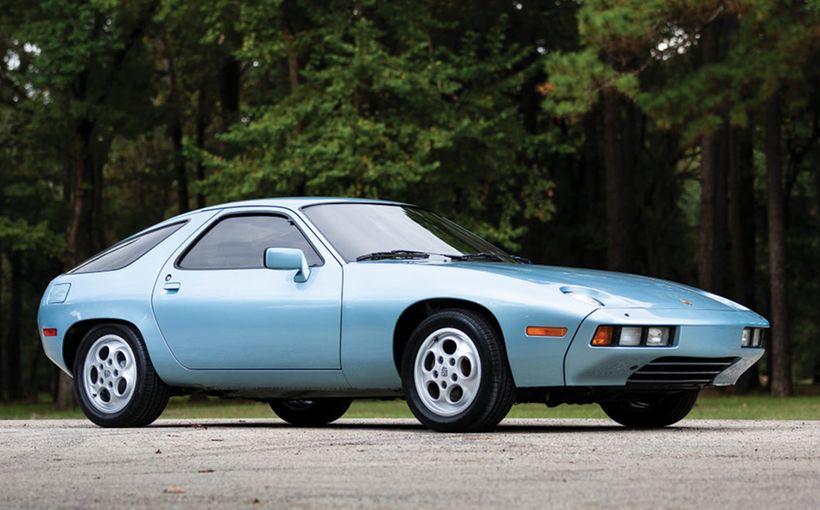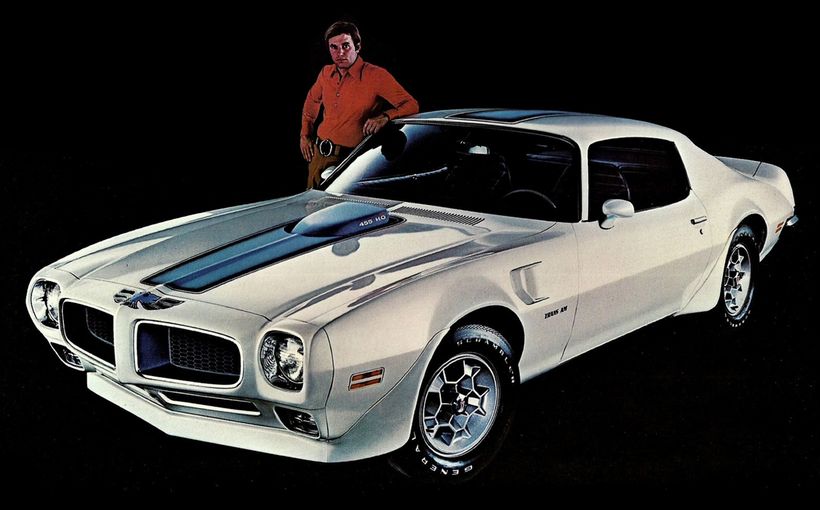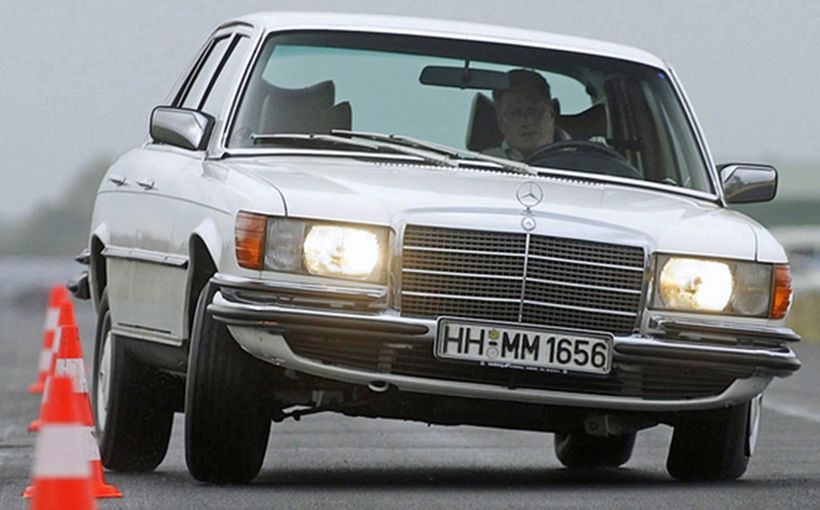Alfa Romeo GTV6: Group A's Cheeky 'Big Car' Challenger

The Alfa GTV6 was not only a formidable competitor in Group A’s under 3.0 litre class but also proved to be a regular top-five finisher in the outright division. This is multiple Australian rally champ and Bathurst/ATCC winner Colin Bond pushing hard at Sydney’s Oran Park in 1986. What a great-looking race car!
“The Alfa GTV6 had almost everything required to be an outright Group A contender…it just needed more power,” Colin Bond told Shannons Club as he reflected on his two memorable seasons racing the giant-killing Italian coupe at the top level of Australian touring car racing in the 1980s.
“It was very well-balanced, it had a good power-to-weight ratio and it was pretty slippery through the air, but to be on equal terms with cars like the BMW (635 CSi) and Mustang it really needed to have at least 300bhp and it had nowhere near that.
“The fact is there’s no substitute for horsepower. Pete Geoghegan worked that out in the 1960s when he switched from four cylinder Cortinas to V8 Mustangs because a really good little car will always struggle to beat a really good big car.”'
It may have been a struggle for Bondy trying to knock off the “really good big cars” but enduring memories of the first year of Aussie Group A in 1985 are the sparkling performances by a pair of bright yellow factory-backed Alfa GTV6s driven by Bond and 1980 world F1 champion Alan Jones.
The Alfas finished sixth (Bond) and eighth (Jones) in the Australian Touring Car Championship (ATCC), which in isolation may not sound like much of a goal score. However, when you take into account the five cars that finished ahead of Bond, you realise the Alfas were kicking well beyond their range.

Anyone lucky enough to witness F1 champion Alan Jones driving the wheels off his LHD Luigi Racing GTV6 during the 1985 ATCC will never forget it, including his admiring team-mate Colin Bond. Here the 1980 world champ has the Alfa in a beautifully controlled power slide at Surfers Paradise on his way to another class win and stunning fourth place outright.
Jim Richards won the series in his 3.5 litre six cylinder JPS BMW 635 CSi followed by Dick Johnson’s 4.9 litre V8 Ford Mustang, Peter Brock’s 4.9 litre V8 Commodore, Neville Chrichton’s JPS 635 CSi and Robbie Francevic’s 2.1 litre turbocharged Volvo 240T. Admittedly, the Volvo’s turbo equivalency factor allowed it to just squeeze in under the same 3000cc class threshold as the Alfas, but it had an enormous power advantage over the Italian cars.
Drill further down into the results and you’ll find that Jones, whose prodigious driving skill often seemed to defy the laws of physics, scored several outright fourth place finishes and 3.0 litre class wins, beaten only by rivals with much larger engine capacities and power outputs.
The 1980 F1 champ would likely have continued to terrorise his outright opponents, had he not forfeited the rest of the season to pursue a F1 comeback in Europe with the ill-fated Beatrice Lola team. In his absence, team-mate Bond continued to score some amazing results as you’ll discover in this story.
The GTV6’s local touring car success was just part of a much bigger global picture, as it also won an unprecedented four European Touring Car Championships in a row (1982-85) plus the 1983 British Touring Car Championship. And to prove its versatility, the Australian Rally Championship in 1987.

Bond’s factory ties with Alfa Romeo Australia started in 1984 driving a works-backed GTV6 in the showroom stock Group E production car class. The Alfa was then upgraded to Group A specs for the major long distance races that year, in preparation for an all-out assault on the class in 1985. This is how the works Group A GTV6 looked at Bathurst in 1984, co-driven by open wheeler ace Alfredo Costanzo.
Thoroughbred Breeding
Such results serve to highlight what a brilliant high performance car the Alfa GTV6 really was. Its bloodlines can be traced back to the original 116 series Alfetta GT coupe launched in 1974, designed by the sublimely talented Giorgetto Giugiaro. Initially available with a 1.8 litre version of Alfa’s classic DOHC four, the handsome two-door soon evolved into the Alfetta GTV with 2.0 litre power in 1976.
By 1980 the Alfetta name was dropped and the definitive Alfa GTV6 version released, powered by the all-aluminium 2.5 litre (2492cc) SOHC V6 with 118kW (160bhp) at 5,600 rpm and 213Nm (157 ft/lbs) of torque at 4000 rpm. A distinctive power bulge in the GTV6’s bonnet was required to allow adequate clearance for the larger engine, which was equipped with the latest Bosch L-Jetronic fuel injection.
The boost in power and torque from the V6 looked like a marriage made in heaven, given the remainder of the coupe’s original Alfetta chassis and drivetrain lay-out was about the best you could ask for in a car destined to follow its four cylinder predecessors into motor sport.
Within the compact 2400mm wheelbase was a superb front engine-RWD drivetrain in which the clutch, five-speed gearbox and differential were housed in a rear-mounted transaxle for a perfect 50/50 weight distribution. The disc brakes were also located inboard to minimise unsprung weight in the triangulated de Dion suspension with Watt’s linkage. Front suspension was equally effective with chassis-mounted longitudinal torsion bars acting directly on the lower wishbones.

The Network Alfa GTV6s made life most uncomfortable for drivers in the outright division, particularly on tight, twisty tracks like Amaroo Park where handling and braking were at a premium. Here Jones and Bond are battling Steve Masterton’s VK Commodore and Jim Richards’ BMW 635 CSi at the popular Sydney track in 1985.
With a 1200kg kerb weight in standard road trim, the race-prepared Group A cars that raced in Australia were claimed to be closer to 1050kg, even though the class minimum in Europe was a tempting but difficult-to-achieve 960kg. Depending on who you talk to, competition versions of the V6 engine under Group A restrictions had between 240-250 bhp. The small cubic capacity dictated a 10-inch maximum tyre width.
While all of that resulted in a potent 3.0 litre class contender, the glorious howl of the 2.5 litre V6 could not compensate for the lack of horses needed to make it a genuine outright threat. The 300bhp target pinpointed by Bond is right on the money, as all of the outright players had at least that and more to play with.
The V8-powered VK Commodores and Mustangs were much heavier of course (1325kg) and although they were allowed to run tyres up to 13 inches wide to compensate, in reality 11 inches was the widest rubber they could legally stuff under their standard wheel arches. The Volvo 240T was lighter than the V8s, but like the Alfa it was restricted to a narrower 10-inch wide tyre.
The most important benchmark for the Alfa GTV6 – and every other Group A rival – was the BMW 635 CSi, which shared similar 300bhp-plus engine power and the same 11-inch wide tyre as the V8s, but with a minimum of only 1185kg it enjoyed a massive weight advantage.
The 635 CSi’s formidable numbers highlight the challenge it presented for non-BMW rivals in trying to beat it. And, in particular, the tremendous achievements of the Alfa GTV6, which was always nipping at its heels and ready to pounce.

Multiple ATCC and Bathurst winner Peter Brock had a character-building first season of Group A racing in 1985, as the normally dominant V8 Holden Commodore was not well suited to the new international rules. Here former HDT team-mates Brock and Bond are fighting it out at Amaroo Park’s 1985 ATCC round, where pole-sitter Bond in his cheeky GTV6 finished one place ahead of the Mobil Commodore.
Bond’s Alfa Connection
Colin Bond’s association with Alfa Romeo and its Group A touring car campaign started in 1983 when he won the highly entertaining Alfasud one-make series at Sydney’s Amaroo Park. That success led to a greater involvement with the Italian marque, driven by local PR man Enrico Zanarini who like most Italians was born with motor racing in his blood.
In 1984 Alfa Romeo Australia supplied a GTV6 for Bond to compete in the Group E production car class, backed by a number of Alfa Romeo dealers under the ‘Network Alfa’ banner. According to Bond this was a similar arrangement to that of the Holden Dealer Team and Moffat Ford Dealers Team in the 1970s, in which head office backing was boosted by contributions from the national dealer networks.
The company also provided a workshop for Bond and his mechanics to prepare and maintain the race car at its Sydney headquarters in Matraville. However, the Group E campaign was being used by Alfa Romeo Australia purely as a warm-up for its primary goal of competing in the first ATCC to be run to new International Group A rules in 1985.
The first step in that program was taken in mid-1984, with the upgrading of Bond’s GTV6 from Group E to Group A specifications. The car competed in both the Sandown 500 and Bathurst 1000 events in which it suffered the usual teething troubles, which served as a useful test and development program in preparation for 1985.

A magnificent portrait of Mount Panorama at its finest as the Colin Bond/Gregg Hansford GTV6 powers its way up through the steep Griffin’s Bend heading for a great 3.0 litre class win and eighth outright at the first Bathurst 1000 run to Group A rules in 1985.
1985: Alfa gets a world champ
Network Alfa was raring to go for the first round of the ‘new look’ 1985 ATCC at Winton in February with not one but two factory-backed cars for Colin Bond and the team’s new recruit - a Formula One champion no less!
At that stage Alan Jones had already been signed up as lead driver for the new Beatrice-Lola F1 team, which was due to make its grand prix debut mid-season. However, an offer from Alfa Romeo to drive one of its works cars in as many ATCC rounds as he could before jetting off to Europe was an offer too good to refuse.
While Bond remained in the locally converted RHD GTV6 from the previous season, Jones was thrown the keys to a LHD European-built car which had won an ETCC round the previous year and been shipped to Australia directly from Luigi Racing headquarters in Belgium.
With additional commercial backing from Ignis Fridges and Montrose Wines the two bright yellow GTV6s looked great, with a spine-tingling exhaust note from their SOHC V6 engines that raised the pulse rate of any hot-blooded Italian. Bond said that Jones’ Grand Prix background had great appeal to local head office management.

A wonderful variety of evenly matched makes and models made the first year of Aussie Group A arguably the best of them all. Here the Bond/Hansford GTV6 is fighting for position on the opening lap of the 1985 Australian Endurance Championship round at Sydney’s Oran Park, where the Alfa duo finished an excellent sixth outright.
“I think AJ might also have been an Alfa dealer here at some stage, but his main appeal was simply the fact he was a F1 driver,” Bond said with his signature laugh. “Typical Italians, you know, they’re all mad about Formula One, Ferrari and all that. It’s in their blood.
“AJ was fantastic. John Smith (Toyota driver) and I used to look at him out on the track during practice trying to tie this Alfa up in knots and it was really good to watch. He was spectacular in that car, he really was.
“The reason why they brought the Luigi car from Europe was because it was a little bit lighter and I think Alan was more used to driving LHD cars with right-hand gearshifts after all the years he spent in Europe.
“It just fitted him better I guess, but there wasn’t much of a difference between the two cars, he just drove the wheels off it. You know, people often ask me who I think was Australia’s best driver and I always say Alan Jones. It was just a shame that few Aussies got to see him performing at his peak in F1, back in the Williams days, because that all happened overseas.”

Colin Bond fires the rorty 2.5 litre V6 into life as he prepares for another battle in 1986. Note how the Group A rules retained the standard dashboard and door trims but allowed proper racing seats and removal of all floor coverings. Immaculate preparation in the works car is evident, right down to the highly polished lightweight aluminium roll cage (later outlawed on safety grounds).
A highlight of the Alfa team’s strong showing in the 1985 ATCC was Bond’s stunning pole position at the ninth round of the championship at Sydney’s tight and twisty Amaroo Park. To out-qualify every car in a quality ATCC field was an historic achievement for the GTV6 and a reminder of Bond’s formidable reputation as an Amaroo Park specialist.
“We used to do a lot of racing and testing there; it was a very tyre-sensitive track and when you had grip the lap times were unbelievable,” Bond explained. “You could go flat-out everywhere but once the tyres started to lose grip you’d go backwards at 100 mph.
“The pole position didn’t do us much good in the race because a few of the bigger cars got the jump on us going up the hill. The same thing used to happen in the Torana XU-1 days at Bathurst. You’d get blown away by the slower V8 Fords heading up the Mountain and then they’d hold you up everywhere else.” Even so, he finished a fighting fourth outright that day.
Amaroo Park certainly proved to be a happy hunting ground for Bondy and his Alfa GTV6 in 1985, finishing second overall to Jim Richards’ dominant JPS BMW 635 CSi in the four-round AMSCAR series.

The rapid 325i entered by JPS BMW for young gun Tony Longhurst raised the stakes in the battle for 2.5 litre six cylinder bragging rights in 1986. Bond’s Alfa and Longhurst’s Beemer were closely matched and engaged in some fierce duels, like this close encounter at Sydney’s Amaroo Park.
The Bond/Alfa combination was also in sparkling form in the 1985 Australian Endurance Championship (AEC) which consisted of five long distance races including the prestigious Sandown 400 and Bathurst 1000 classics.
Bond switched to the LHD Luigi car for the AEC and enjoyed great success, not only winning the 3.0 litre class for Alfa Romeo but also finishing third outright in the series with the help of talented co-driver and future Bathurst 1000 winner Gregg Hansford. Bond was again beaten only by JPS BMW, this time a 635 CSi pair driven by Richards and his younger protégé Tony Longhurst.
A major highlight of the AEC was winning the 3.0 litre class at the first Bathurst 1000 run to the new Group A regulations. It was, in fact, the first time a 116 series Alfa of any kind had won its class at Bathurst after many attempts during the Group C era with the Alfetta sedan, Alfetta GT and GTV.

After winning the 3.0 litre class at Bathurst in 1985, the following year proved a great disappointment for the Network Alfa team as the Bond/Fitzgerald GTV6 retired with a rare engine failure at two-thirds distance. It was the third and final outing for the works GTV6 at Bathurst, replaced the following year by the new 75 Turbo sedan which shared a similar transaxle design.
1986: A virtuoso performance
Network Alfa’s dazzling 1985 season ended – literally – with a bang when Bond became entangled in a multi-car pile-up caused by an oil slick at the rain-affected final round at Surfers Paradise. The LHD Luigi car was severely damaged which prompted Bond to re-shell it in RHD form for the 1986 season, as plans to upgrade to the exciting new Alfa 75 Turbo sedan had to be delayed until the following year. 1986 was also the final year of GTV6 production.
The competition in Class B (2001-3000cc) was also heating up with JPS BMW entering a nimble 325i for Tony Longhurst and Nissan joining the battle with its new 2.0 litre turbocharged DR30 Skyline which proved to be a genuine outright rival to the ATCC-winning Volvo 240 Turbo.

The Alfetta coupe proved a popular platform for Sports Sedan racers of the era. The best example was built by South Australia’s K&A Engineering for Tasmanian enthusiast Don Elliott, armed with a mid-mounted 5.0 litre Chevrolet V8 and the finest open-wheeler principles in chassis and suspension design. The first car was destroyed in a fiery near-fatal accident in 1979 which left its young driver Tony Edmondson recovering from serious burns. However, the team regrouped with a second K&A Alfetta-Chev and Edmondson won the 1980 and 1981 Australian Sports Sedan Championships.
Bond’s second ATCC campaign in the GTV6 proved tougher than 1985, finishing ninth overall after the 10-round battle which included five race retirements. The impressive reliability shown by the GTV6 the previous year was less evident, which was perhaps a reflection of the increased competition and need to push the Alfa’s limits even further. His best outright placing was an excellent fourth at the Sandown round, beaten only by Skyline, Volvo and Commodore rivals.
Bond managed to again finish runner-up to JPS BMW in the five-round AMSCAR series at Amaroo Park, although this time the winner was Tony Longhurst’s 2.5 litre 325i. Interestingly, neither Longhurst nor Bond won any of the 11 races but amassed their points through sheer consistency and a points system which encouraged small capacity cars.
Network Alfa also completed its second and last Group A season in fine style in the Australian Endurance Championship, which that year consisted of six long distance races including the Sandown 500 and Bathurst 1000.
Bond’s long-odds attempt to claim back-to-back 3.0 litre class wins at the Mountain, this time with production car ace Peter Fitzgerald as co-driver, ended abruptly after 111 laps due to a rare engine failure caused by a broken crankshaft.

An against-the-odds victory for Greg Carr and Fred Gocentas in the 1987 Australian Rally Championship was remarkable, given their GTV6 was a 2WD car competing against the latest 4WD missiles from Subaru (RX Turbo) and Mazda (Familia). Although the GTV6 had ceased production by then, its enduring sporting qualities combined with Carr’s sublime talents made it a formidable opponent. Image: Chevron Publishing
However, Bond also finished third outright in two of the AEC rounds. He was right behind the JPS BMW pair of Richards and Longhurst in the 300km opener at Amaroo and claimed his other podium place at Oran Park’s 100-lap final, in which he was only beaten by Nissan Turbo and BMW 6 series opponents. It was an astonishing achievement for a car designed to be a class contender.
So the Network Alfa GTV6 finished its two-year Group A touring car program in the same way it started – regularly finishing in the top five and getting beaten for outright wins only by more powerful opponents.
On reflection, power - or not enough of it - is usually pinpointed when discussing the GTV6’s time in Aussie Group A. Had it been blessed with a larger capacity engine from the start, like Alfa’s 3.0 litre V6 which entered production in 1987, it could well have had the 300-plus neddies it needed to be a genuine outright contender. And the local touring car racing history books could well have told a very different story.









